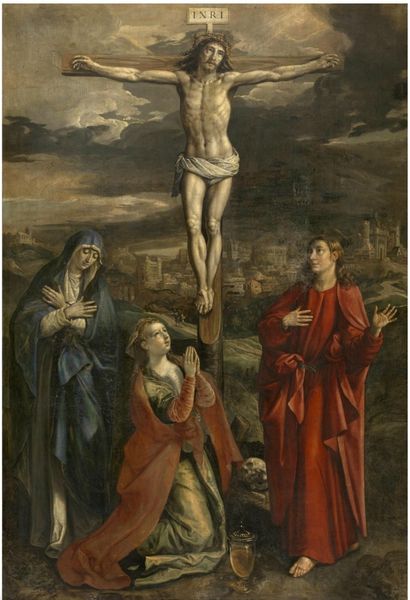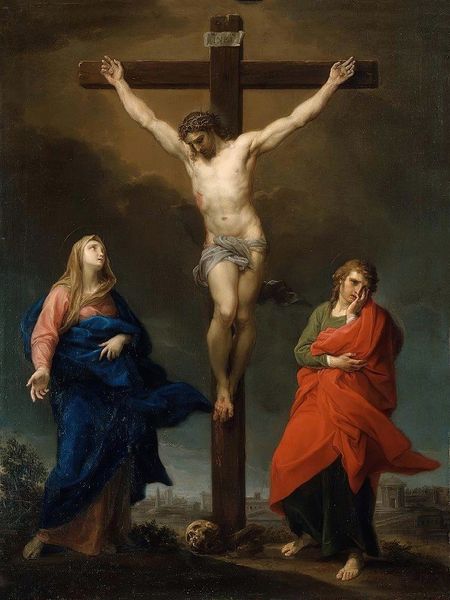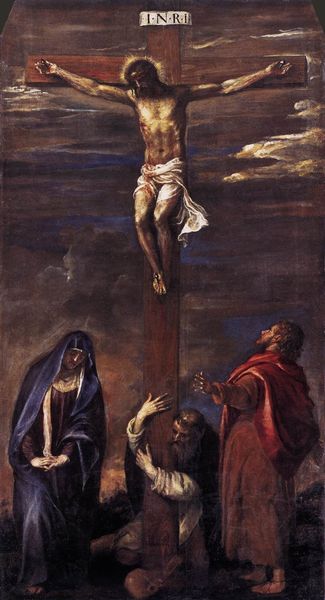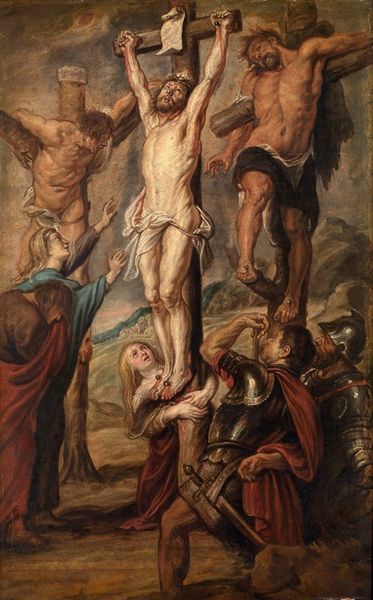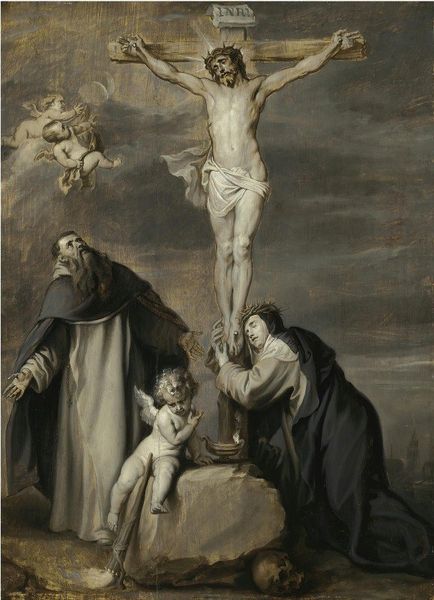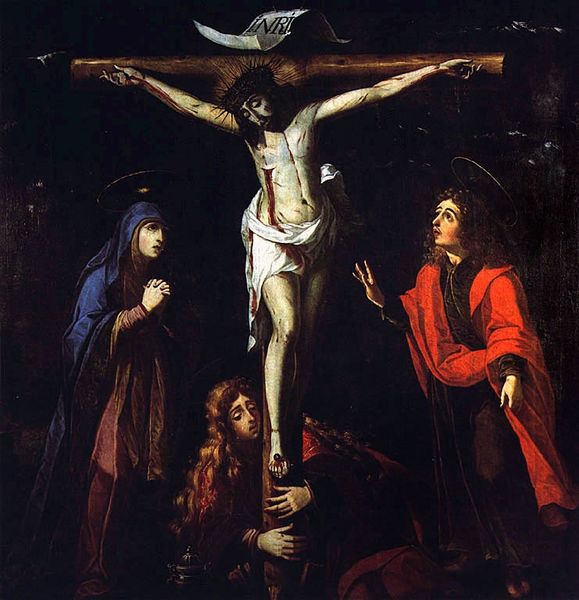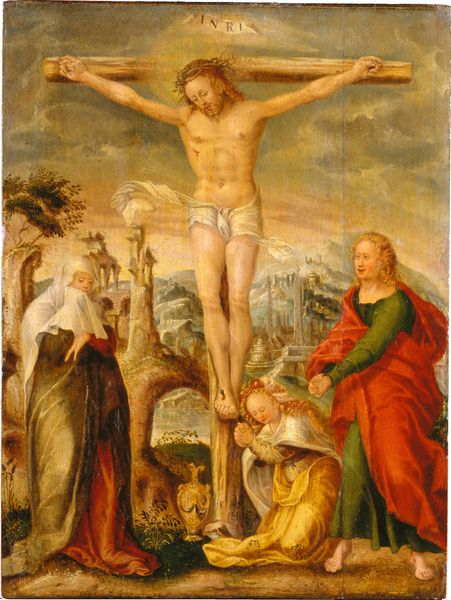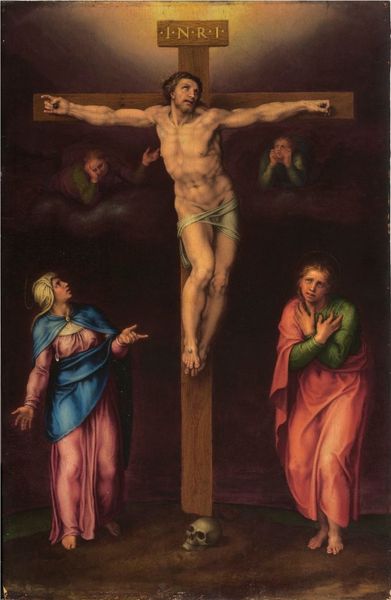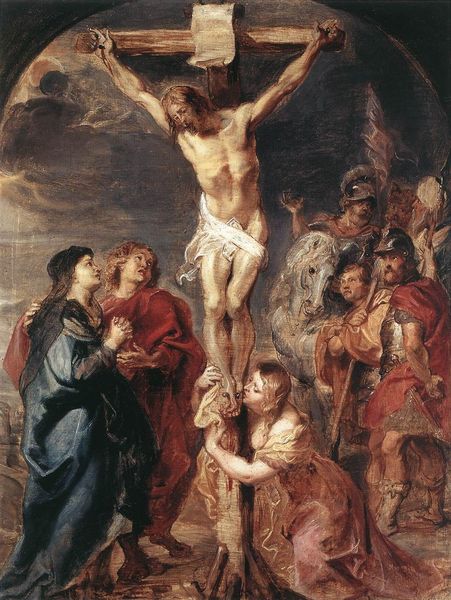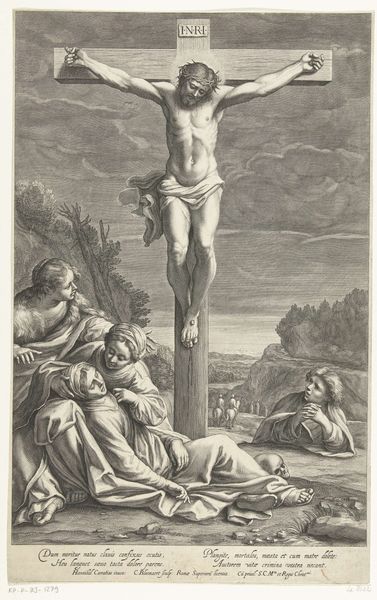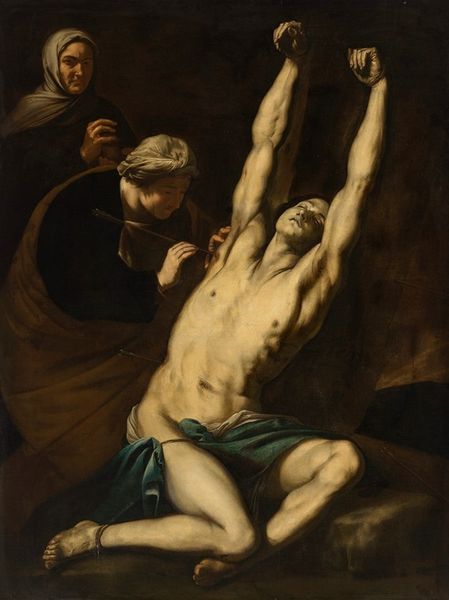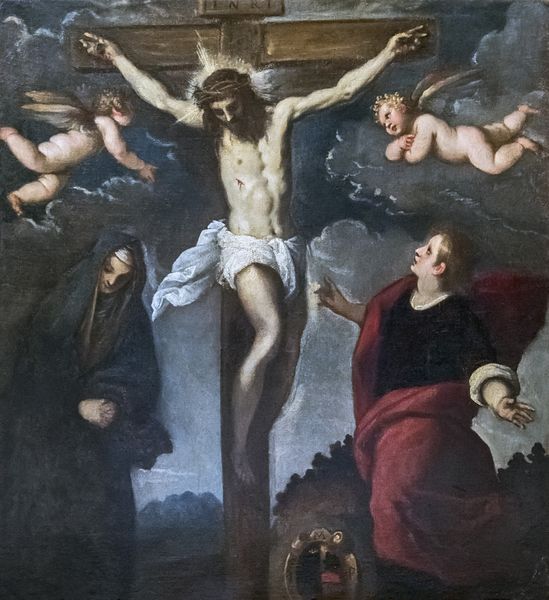
painting, oil-paint
#
portrait
#
baroque
#
painting
#
oil-paint
#
figuration
#
oil painting
#
history-painting
#
portrait art
Copyright: Public domain
Editor: This is Guido Reni's "Jesus Christ Crucified between St. Catherine of Alexandria and St. Julius," painted in 1622 with oil paint. The scene is intensely melancholic, but also has a feeling of defiance in the stances of St. Catherine and St. Julius. How do you interpret this work? Curator: Reni places us in a complex socio-political landscape. Consider the role of the Church in the 17th century. It wielded immense power, and artists like Reni navigated that power dynamic. This isn't simply a religious painting; it's a commentary on power, faith, and resistance. Editor: Resistance? How so? Curator: Look at Catherine, her gaze directed upward. She embodies steadfastness, while Julius mirrors a calm, yet firm resolve. These saints flanking Christ aren't merely witnesses, they're symbols of resistance against the forces that led to Christ's crucifixion, a resistance relevant to the political and religious tensions of Reni’s time. Don’t you think? Editor: That's not how I originally saw it, but I appreciate that the visual representation becomes an act of subtle defiance. Did the choice to depict these particular saints have a specific message for the political situation in 1622? Curator: Absolutely! Both figures can be seen as paragons of unwavering belief amidst political persecution, as icons of strength, implicitly critiquing the contemporary structures of injustice. Seeing art this way encourages a critical evaluation of established power structures. Editor: I've definitely learned a lot about situating the work within a historical power structure, instead of just thinking about the religious symbolism itself. Curator: Precisely, that interplay is key to understanding the potency of works like this. It shows us how deeply entangled art is with the social and political narratives of its time, which hopefully has given you something new to think about when looking at art.
Comments
No comments
Be the first to comment and join the conversation on the ultimate creative platform.

